Pepe chair by Helene Steiner made from rolled-up beech veneer
Inspired by cigar makers in Spain, Austrian designer Helene Steiner has used thin strips of beech wood rolled into pipes to create a folding chair.
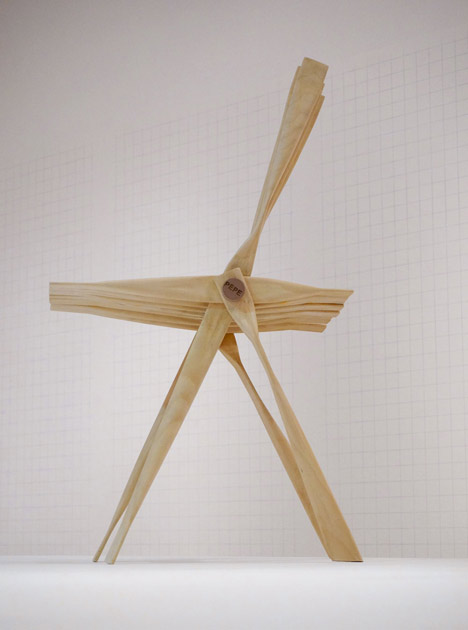
To make the Pepe chair, water is applied to one side of each slice of wood, or veneer, before glue is added on the other. This ensures there is tension on both sides of the sheet and the veneer doesn't start rolling itself before the process has begun.
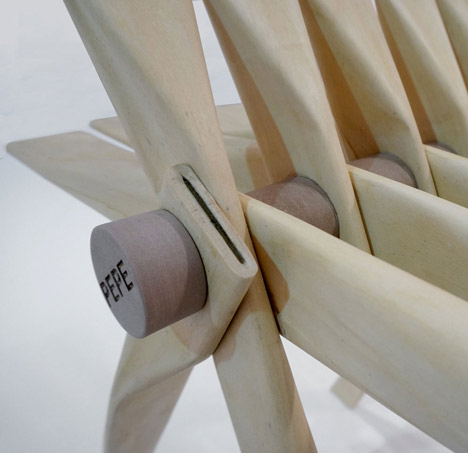
The veneer is then rolled into a pipe. Once it has set, each end is pressed to increase strength and make them easier to join to other components. The wood is then pressed in the middle in the opposite direction using a wooded mould.
"This helps to control the direction and position of the pressed parts so they are accurate," explained Helene Steiner.
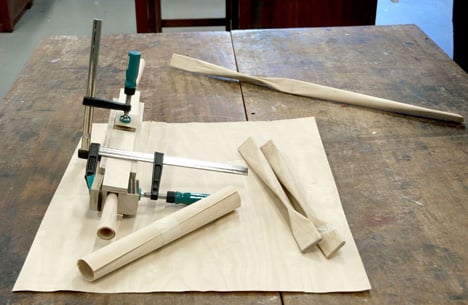
Because the veneers are just 0.5 millimetres thick, the material is pliable enough to allow the pipes to be squashed almost flat while still retaining structural strength. The pipes are then left to dry for a day before they can be sanded and waxed.
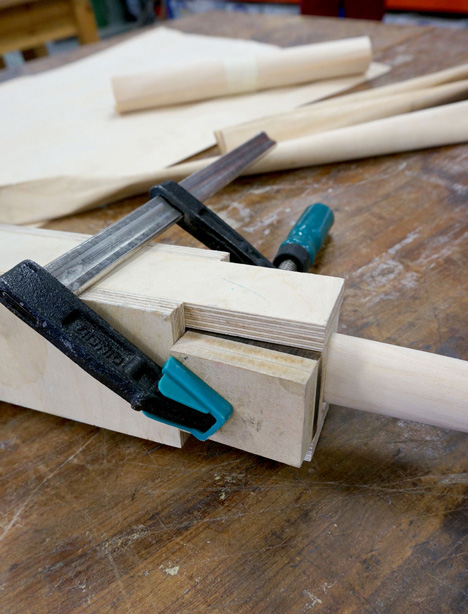
"Manufacturing in this way results in a strong structure with a novel 3D form and flat sections for assembly," Steiner added . "The flexible process cleverly uses different pressing angles to make shaping in any direction possible."
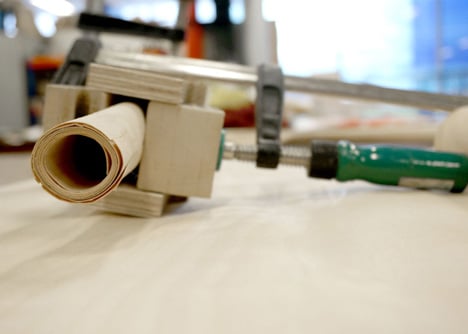
The Pepe chair is then assembled by passing two threaded rods through the middle of the chair. Spacers are added to create enough pressure to hold everything together. A separate rear stand made of two extra pieces of piping is attached to complete the chair.
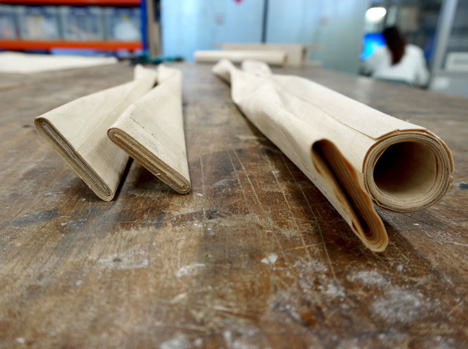
"The squashed borders of the legs create the unique form and enable different structures with only one screw," explained the designer.
The production method was first developed by CuldeSac, a Spanish design studio based in Valencia. Called the great tobacco project, the process was inspired by cigar makers in the small town of Torres de Quart in Spain, who have been making cigars there for more than 100 years.
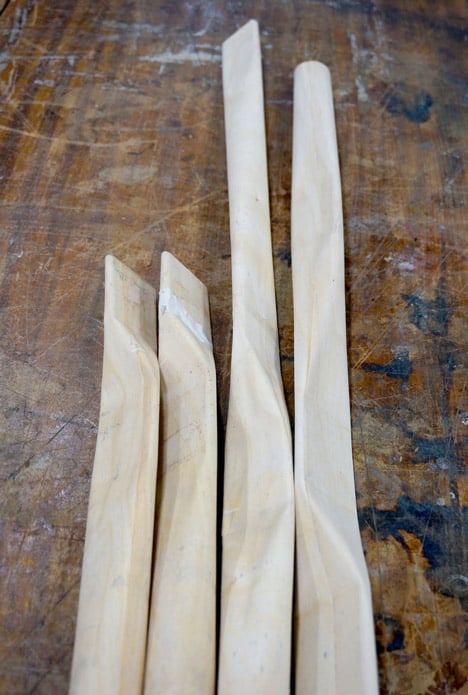
"The name of the chair is an homage to my work at CuldeSac and an expression of thanks to my time as a designer there and the collaboration with Pepe Garcic from CuldeSac," said Steiner.
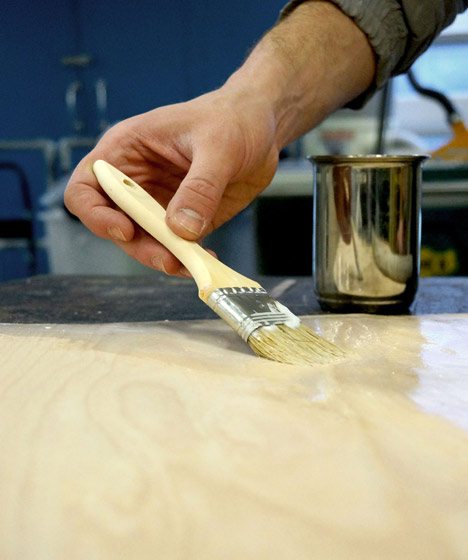
In future, Steiner believes the process has wide-ranging applications beyond furniture. "The process gives great opportunity for strong and lightweight constructions as shelves and smaller architectural constructions," she said. "For that, the process has to be translated to a industrialised process."
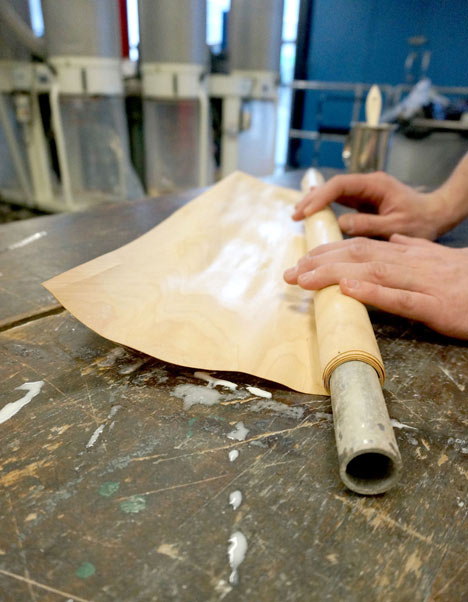
Steiner is currently studying at the Royal College of Art in London and presented the Pepe chair at the recent Work in Progress show.
Here's some text from the designer:
Pepe
Pepe is made of paper-thin veneer and therefore lightweight but also very stable.
The process is as exciting as the result. The veneer is only 0.5 mm thick and moistened on one side with glue, this is then rolled into a tight pipe and pressed. Manufacturing in this way results in a strong structure with a novel 3D form and flat sections for assembly. The flexible process cleverly uses different pressing angles to make shaping in any direction possible.
Pepe is lightweight and stable and uses a production method developed at CuldeSac Valencia during "The great tobacco project" in 2011.
Old production processes, materials, factories and the people who work and create there are a real inspiration for life. In a small town near Valencia you can find one of those factories full of history and a fascinating atmosphere, with authentic people and a special patina. The great tobacco project was inspired by the unique process of hand rolled cigars that have been produced at Torres de Quart in Torrent for 100 years.
Every table leg of the great tobacco project will be produced out of a thin sheet of wood and will be hand rolled to a perfect pipe. The squashed borders of the legs create the unique form and enable different structures with only one screw. Each table leg is unique. The etiquettes are aligned to the typical cigar banderoles and give every single leg the last touch of its personality. The great cooperation between CuldeSac and Torres de Quart brought the handmade cigars back to the place of inspiration.